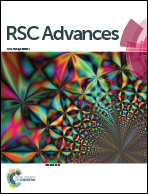Scalable production of transition metal disulphide/graphite nanoflake composites for high-performance lithium storage†
Abstract
A facile, industrially viable strategy is proposed for the scalable production of transition metal disulphide/graphite nanoflake composites by a combination of ball milling and short-time sonication. The experimental conditions are mild and energy efficient, and the yields are fairly high. This strategy can produce larger MoS2 and WS2 nanoflakes with more lithium storage sites than the conventional, long-time sonication method. Besides, the obtained graphite nanoflakes have a higher degree of lattice integrity than reduced graphene oxide that is structurally permanently damaged, and can thus serve as a high-efficiency conductive additive. A prominent synergy is witnessed between the excellent electrochemical performances of the MoS2 and WS2 nanoflakes and the high electronic conductivity of the graphite nanoflakes. The resulting MoS2 and WS2/graphite nanoflake composites exhibit superior lithium storage capacities, cycling stabilities and rate capabilities, thus providing a basis for developing high-performance anodes of next-generation lithium-ion batteries.


 Please wait while we load your content...
Please wait while we load your content...